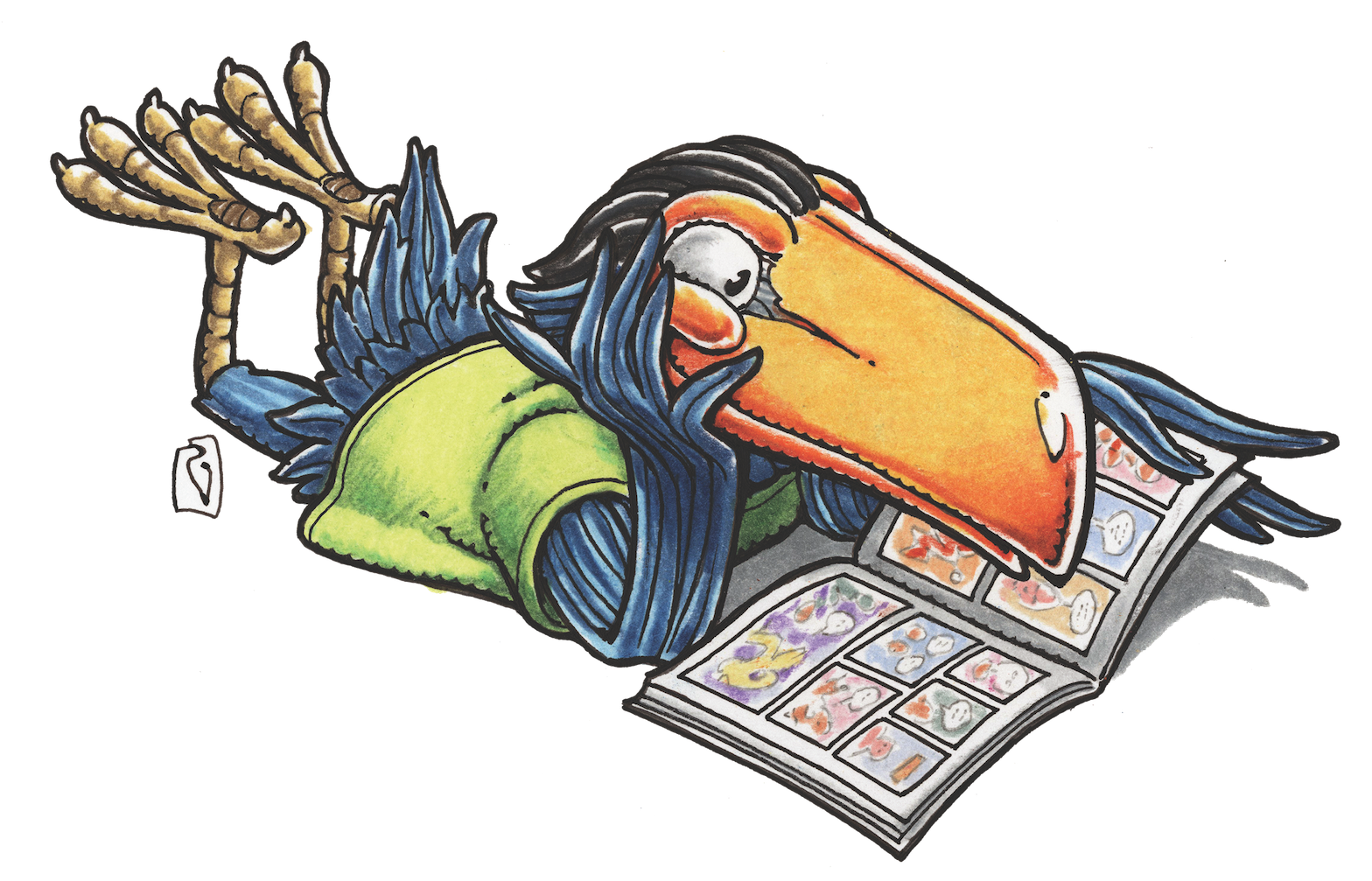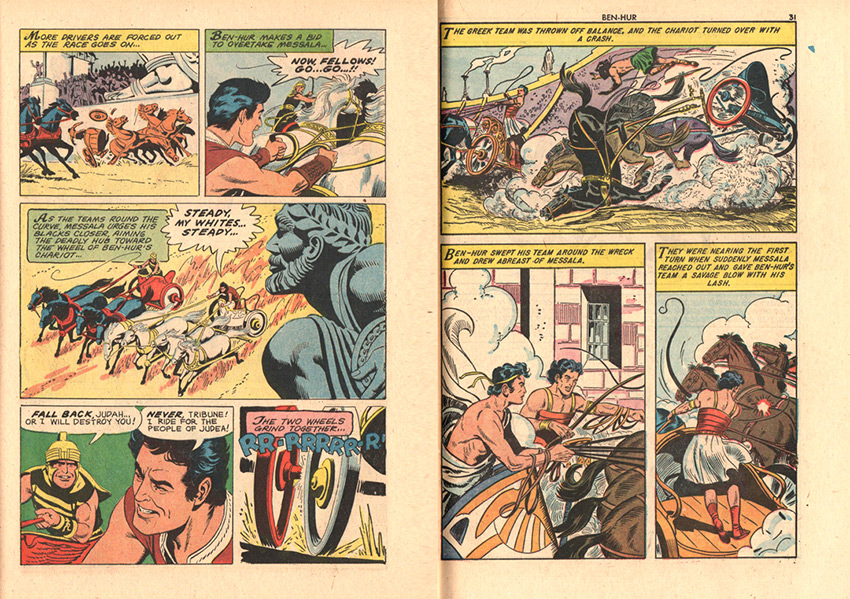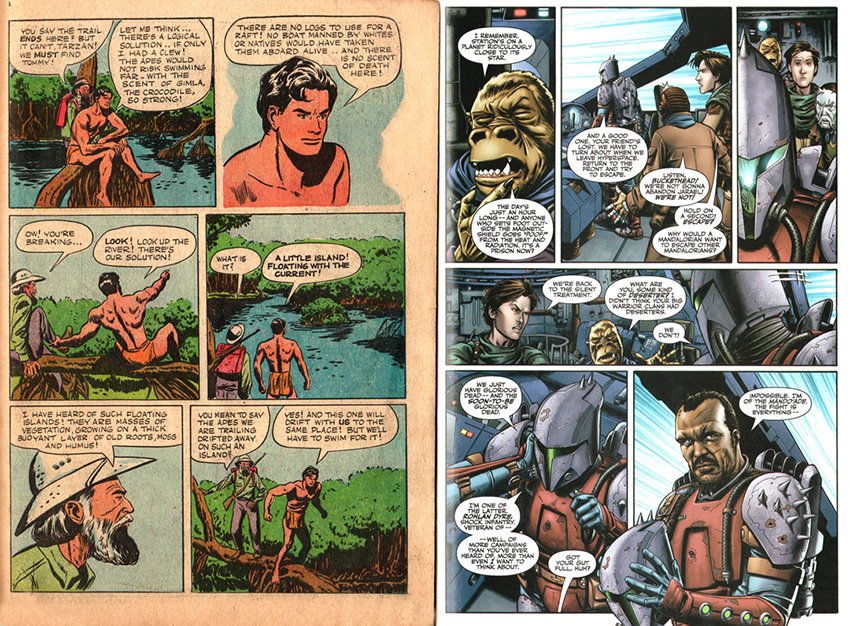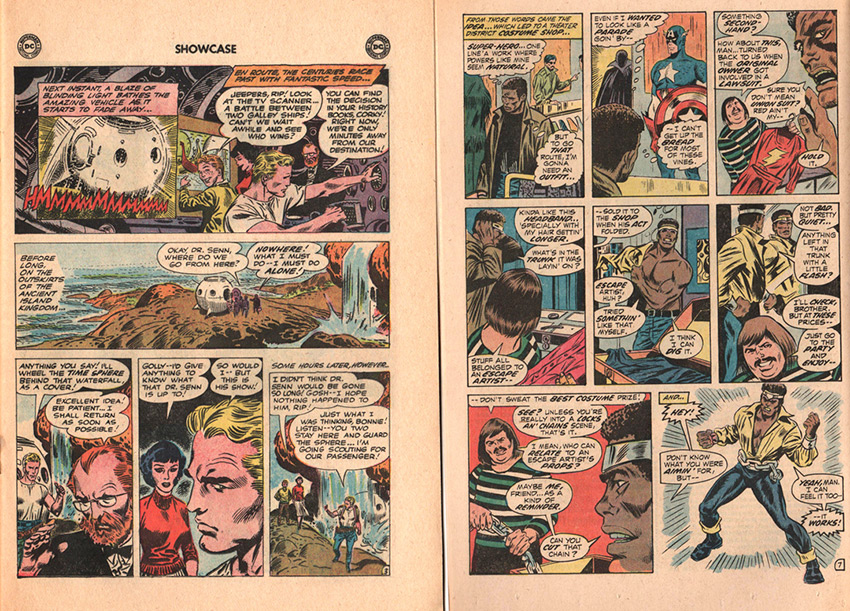MAGGIE’S WORLD BY MAGGIE THOMPSON
Maggie’s World 048: No, But I Read the Comic

Conversation years ago: “Have you read the novel?” “No, but I saw the movie.”
For some of us, though, it was: “No, but I read the comic book.”
I actually read Gilberton’s Classics Illustrated line because I wanted to know more about the novels that I wasn’t old enough to find easy reading. (There’s a tradition that the line was primarily used by high-school students who copied “what was in the yellow boxes” to do their book reports. I was just curious about what happened in “Classics.” (The Cloister and the Hearth? Really? A classic? Well, OK, but I think there’s a reason it didn’t get a bunch of reprints. I sure didn’t follow it up in later years, when I began to seek out the original novels for entertainment.)

In fact, when we were limited to consuming what was actually in our local theaters that weekend, it was the comic book adaptation that let us revisit something we had seen and liked the month before. Hey, now and then, it even allowed a glimpse into both novel and movie versions. (For example, Lew Wallace’s 1880 story Ben-Hur: A Tale of the Christ even received two comics adaptations around the time of the Charlton Heston extravaganza.)
Spinning-Off Stories
There was another bonus. Sometimes, the world of the novels or movies was rich enough to be the foundation for entirely new stories. I seldom saw Donald Duck cartoons in theaters, but I read and reread many tales featuring the variety of citizens of Duckburg—including a rich blend of new inhabitants. (Thanks, Carl Barks!)
Heck, Walt Disney’s Scamp was on view—without lines or even a name—in a tiny clip at the end of Lady and the Tramp. Nevertheless, he appeared in spin-off newspaper strips from 1955 to 1988. And Dell gave him his own series, starting with Four Color #703 in 1956, with art by the masterful Al Hubbard.

While perhaps the most numerous of early spin-offs were those connected to Disney’s screen entertainments, other movie-connected worlds (some with predecessors in novels and short stories) saw their own fresh stories doled out month after month on newsstands. Fawcett provided titles involving Hopalong Cassidy and Lash LaRue, Dell brought us The Lone Ranger, Zorro, Tarzan … the list from the Golden Age goes on and on, and spin-offs continue to this day, with such publishers as Dark Horse, IDW, Dynamite, and BOOM! Studios continuing to provide new ongoing series based on media favorites.
I Realized While Writing This …
In the early 1990s, Innovation’s David Campiti invited me to try providing a fresh story to fit into the world of the revamped Dark Shadows. Gold Key had released a series based on the TV show that ran from 1966 to 1971; the comics started in March 1969, with the first issue featuring a photo of Jonathan Frid as Barnabas Collins, and lasted till 1976.
When Dan Curtis revived the show for 1991, Innovation got the license to tell new stories set in that world—with likenesses of the new TV performers, including Ben Cross as Barnabas. There were other guidelines: all the stories had to be set in the 10-week period during which Barnabas was undergoing treatment to cure his vampirism. So we could forget about suspense as far as the fates of series characters were concerned, and their depictions had to be faithful to the series. And so on. All of which made me realize that many other licensed comics must also follow restrictions when they tell spin-off tales.
And that was another of my instructions: whereas there are budget and other limitations on TV productions, comics can go nuts over what they show, the number of settings they involve, and so on. (Footnote: A bonus of my own came in Dan Curtis’ 1996 TV feature Trilogy of Terror II. In the “He Who Kills” episode, a museum security guard is reading one of my issues and saying something like, “I love this stuff!” Yay me!)

And Now
“Yes,” comics devotees tell movie viewers, “you’ve seen Nicholas Hammond as Spider-Man, Tobey Maguire as Spider-Man, Andrew Garfield as Spider-Man, and Tom Holland as Spider-Man. But to understand the character, you need to read Amazing Adult Fantasy #15. Or Ultimate Spider-Man. Or Spider-Man 2099.” Or, “Riverdale? Let me suggest you check out the new series from Archie. In the meantime, you know, there are changes from decades ago that you might like to know about.”
Because, these days, it’s suddenly the comic books that provide the original source material, and students of the “authentic” lore scramble to stay up to date, as new issues hit the shops every month. On which side of the “Civil War” will the Marvel heroes fight? What’s going to happen to Logan? Comics readers keep track and verify the fidelity of what they see on the big screen, because we know what happened to Ego, the Living Planet. And we met Steve Trevor long ago. And some of us even know how many versions of Lex Luthor have been foe or ally over the years—and the need to establish which Captain Marvel we’re talking about.
Heck, how many of your friends have already come to you, searching for the fidelity of last year’s entertainments on big and small screens? Some things seem to remain consistent from the Golden and Silver Ages, while others don’t. As Uncle Ben’s advice to Peter has now been established, “With great power comes great responsibility.” And we act as the responsible historians, sitting respectfully quiet during the entertainment and then providing background to those who ask, once it’s over. (And restraining ourselves from quibbling to those who don’t ask.)
And, now and then, we can revert to earlier days by pulling out an issue of Classics Illustrated to remind ourselves how it differs from the original work. (My favorite: #89, Crime and Punishment, which closes with, “Because of space limitations, we regretfully omitted some of the original characters and sub-plots of this brilliantly written novel.” Among the omissions: Dostoyevsky’s heroine and the point he wrote the book to make.)
In any case, it’s not too early to remind your friends already intrigued by the world of comics: Free Comic Book Day is coming in May. Just a thought.
Maggie’s World by Maggie Thompson appears the first Tuesday of every month here on Toucan!